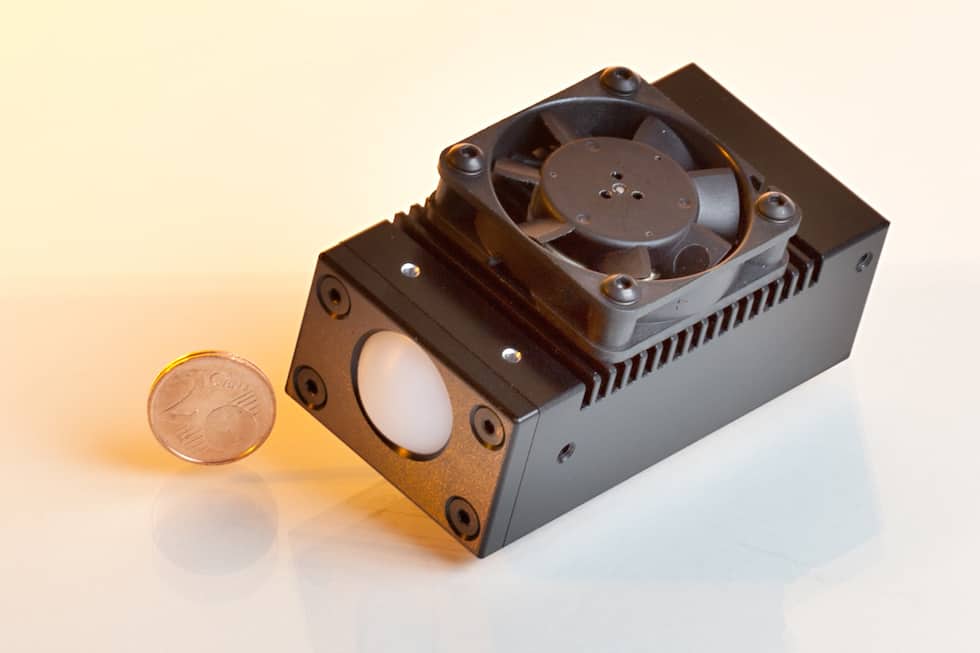
Engineers at the Fraunhofer Institute for Applied Solid State Physics IAF have developed a radar-based scanner that accurately detects defects in wind turbine blades.
Modern wind turbine blades are mainly constructed from glass fibre and carbon fibre reinforced plastics (GFRP / CFRP), so that they can elastically absorb the wind energy from strong gusts of wind. For a single blade, up to 100 sheets of glass fibre webbing are layered on top of each other, shaped and then glued together with epoxy resin.
“The difficulty lies in layering the glass fibre sheets flat before they are glued, without creating undulations and folds, and avoiding the formation of lumps of resin or sections of laminate which don’t set when applying the epoxy,” said Dr Axel Hülsmann, coordinator of the radar project and group manager of sensor systems at the Fraunhofer IAF.
These kinds of defects, as well as delaminations or fractures, can be identified on a large-scale using infrared thermography.
“Our material scanner enables defects to be identified with even greater accuracy, as depth resolution is also possible with radar technology – even in places where ultrasound methods fail,” Hülsmann said.
According to Fraunhofer IAF, the core of the scanner is a high frequency radar, which operates in the W band between 85 and 100GHz with a few watts of transmitting power. Specialised software is then used to process the transmitter and receiver signals and visualise the measurement results.
“This enables us to generate a cross-sectional view of the blade, in which defects can be identified in the millimetre range, and makes our material scanner significantly more accurate than conventional methods,” said Hülsmann.
The radar module is based on indium gallium arsenide semiconductor technology. It is also light and compact thanks to its monolithically integrated construction, in which different components and functions are integrated into a single chip. It measures 42 x 28 x 79mm, weighs 160g, and has a low power consumption of approximately 5 Watts. The device is also fitted with an integrated microcontroller that emits measurement signals via an internet interface.
Future improvements will see the module’s frequency range extended to 260GHz into the H band. “This will quadruple the bandwidth of the radar module from 15GHz to over 60GHz. While the resolution of the rotor blade cross-section is already very high, our aim is to improve it even further,” said Hülsmann.
In addition to its use in the production of rotor blades, in the future, the Fraunhofer IAF material scanner may also find a role in maintenance, where it could be used to classify defects, such as those caused by the impact of birds.
A demonstrator will be presented at this year's Hannover Messe.





Red Bull makes hydrogen fuel cell play with AVL
Formula 1 is an anachronistic anomaly where its only cutting edge is in engine development. The rules prohibit any real innovation and there would be...